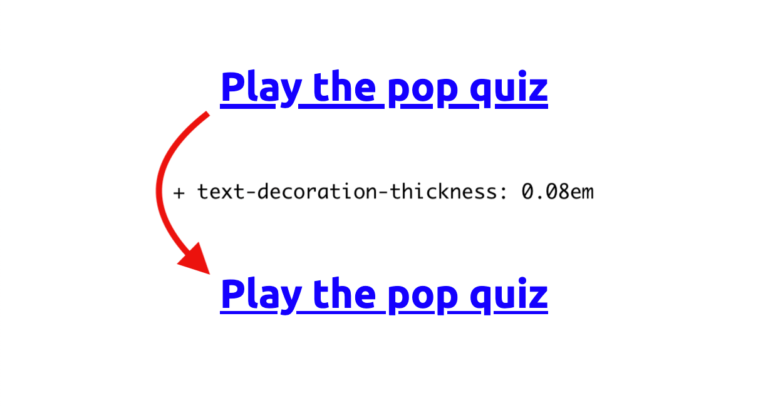
In design thinking, there is one principle more vital to success than any others. That is creative problem solving centered around improving the human experience. Fortunately, data provides a means to access and improve upon this principle for businesses that apply it.
As companies strive to incorporate more data-driven decisions into their operations, the role of design thinking should not be neglected. Data as a means of understanding user experience enables businesses to streamline their marketing strategies. Where design thinking and data analysis intersect, the results are actionable insights. Data-driven marketing is about using these insights to form a more relevant and impactful platform for your business.
But what exactly does design thinking entail? How can you use these concepts in data-driven marketing? And how can your business grow as a result?
Here, you can explore these questions and more as you learn how design thinking powers data-driven marketing. From principles to potential, these insights can elevate your marketing for greater success.
What is Design Thinking?
Table of Contents
Let’s start by defining what design thinking is and how it can relate to data-driven analysis procedures. This ideology informs your ability to solve problems in terms of your audience, helping you to frame solutions around real and impactful strategies. In marketing, it can be the most effective tool in your toolkit.
In short, design thinking is a multi-stage set of tools and principles that puts a target audience at its forefront. It assesses who you’re designing for and centers actionable solutions around real needs and problems. Attributed to former Boeing engineer David Kelley, this philosophy/toolkit is your key to better marketing strategies.
Design thinking makes this possible through its unique principles. These include
- Empathy. Because real people are at the center of all business, design thinking places the user’s or customer’s needs at the center of the work.
- Collaboration. You need the input and opinions of customers and partners to build an effective and empathetic design.
- Innovation. Solutions and scalability require thinking outside the box.
- Experimentation. Trying out new ideas alongside your target users is key to generating greater success.
- Actionability. The design thinking process focuses on hands-on strategies for improvement and innovation, actions you can take to explore business improvements.
Central to all these principles is empathy. Design thinking is all about putting yourself in the place of your users and customers to better provide solutions. Through it, you make it easier to experiment and innovate in ways that can make a real difference. In marketing, this often revolves around content and messaging that is especially relevant to your audience.
Big data, or information sets too vast to be analyzed by a human being, can be an effective means of supplementing user-focused design thinking for even more powerful results. That’s because data itself can be a source of ideas and actionable strategies.
Where Design Thinking and Data Analysis Meet
The data you gather (big or small) represents information. As a result, you can plug that information into the stages of design thinking to help you identify areas of improvement. From here, an empathetic approach to problem-solving elevates your ability to derive actionable insights.
The intersections between design thinking and data analysis are many. These are the situations you’ll need to focus on as you look to improve your marketing and grow your business. From making your marketing data more palatable to enhancing overall visibility, the combination of data analysis and design thinking makes it easier to avoid analysis paralysis and come away with real-world improvement strategies.
Businesses in all kinds of industries have made use of these intersection points to great success. For example, Airbnb transformed itself into a household name by applying design thinking, experimenting, and analyzing the data. The vacation rental platform found itself stuck at a flat revenue of $200 a month, but by exploring non-scalable solutions to the problems it found itself in, it was able to turn things around.
This was a risk that gave the company the resources it needed to derive more scalable features and design a user-focused platform that grew with time. Similarly, PillPak went from a start-up to a $1 billion Amazon acquisition with design-thinking innovations applied to data from the pharmaceutical industry.
With growth potential like this, applying design thinking to customer-centric marketing is one of the best things you can do for long-term business success. But how can you use design thinking in data analysis to produce the kinds of results Airbnb or PillPak did?
How you can use Design Thinking in Data Analysis
To understand the applications of design thinking in marketing, it helps to understand data analysis. This is a multi-step process that requires first specifying data collection requirements and then cleaning and organizing that data for assessment. Ultimately, you’ll have to effectively communicate your data-driven insights to your marketing team and even your customers if you hope to maximize the potential of data-driven design thinking.
You can even pair the data analysis process with the stages of design thinking to inform a customer-centric experience from the start. Through the intersection points of these ideologies, it’s easier to identify real customer pain points and problems.
These are a few of the ways you can go about applying design thinking in data analysis for better, data-driven marketing:
Framing your analysis questions
To start, design thinking should frame the questions you ask of your marketing campaign. These should be questions you can answer with data, complete with built-in indicators of success. You want your approach to data to be targeted and focused on real solutions.
That’s why even the data requirements you specify for your marketing campaigns should be tied to design thinking. You want to evaluate which data informs customer outreach, success, loyalty, and more to ensure you maintain relevant messaging.
Then, the areas of improvement identified by the data you collect frame the ways you proceed with innovation. Examples of effective analysis questions that result might include
- How can customer engagement be improved by at least 5%?
- What ad strategies can we employ to boost conversion rates by 2%
- What UX improvements can be made to reduce landing page bounce rates by 3%?
These and many more analysis questions like them combine the power of data with the empathy of design thinking. Above all, improvements in customer engagement come from adding value to the experience. Assisted by data, you can see the monetary implications of these improvements as well.
Creating a data-driven workflow
Similarly, design thinking and data analysis can be combined to produce a more efficient workflow. This is because more convenient and collaborative ways to work give employees more time to focus on the customer and evaluate issues.
This is why Agile development has taken off in the Software as a Service (SaaS) industry. Agile development (like design thinking) is all about collaboration and empathy, allowing developers to focus on the end-user experience throughout the process. A reported 41% of marketers already employ this flexible and customer-centric framework, with another 42% of marketers looking to implement it.
Design thinking in data-driven marketing can offer similar flexibility in an empathetic context. By collaborating with employees, customers, and clients, you can generate higher-quality data directly from your most important sources.
From here, your marketing approach can cater to actionable and highly relevant strategies.
Targeting marketing success
Data analysis is also an essential method of segmenting your marketing audience to focus more specifically on niche marketing or certain demographic pain points. Any marketing strategy worth its salt includes customer personas. Each of these entails its unique data points.
From here, design thinking can be applied to each targeted group to help form narratives around needs and challenges. The metrics you evaluate through the data analysis process reveal your audience and the ways your marketing is or isn’t meeting their needs.
For example, higher rates of abandoned carts for a certain demographic could indicate that your marketing to this group is misleading in some fashion. The data allows you to go back, reassess, and reevaluate.
The focus, no matter what the application, is to take the collaborative and customer-focused aspects of design thinking and apply them wherever the data indicates a need. Whether this data comes from page analytics, customer surveys, or a healthy combination, its potential can mean more effective marketing strategies.
The Potential of Design Thinking in Data-Drive Marketing
Design thinking is vital to every element of business success. That’s because it combines a customer-focused approach to business with innovation, collaboration, and data analysis to create the most relevant solutions to any given problem.
McKinsey research even found that high design scores correlated with higher revenue growth. The top quartile of these businesses experienced an average revenue that was 10% higher than their competitors.
The key is empathy. Data helps us understand and collaborate. By applying these concepts to a marketing strategy, you stand to elevate your business as a whole. Indirect results may also include a better brand perception overall, a feature you can’t put a price on.
Explore the potential of design thinking in your data-driven marketing campaigns and reap the rewards of a customer-centric business model.






